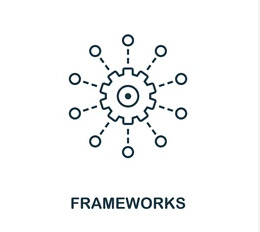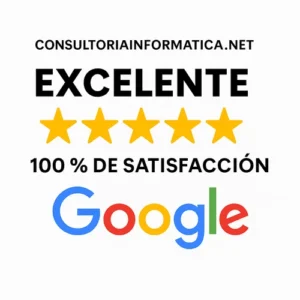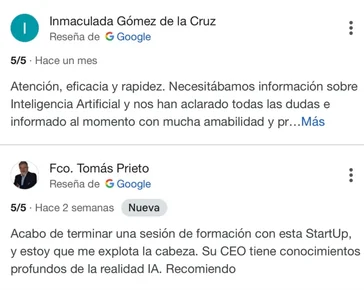#frameworks de JavaScript
Explore tagged Tumblr posts
Text
Frameworks JS 2025: ¿Cuál elegir para tu empresa?
Comparativa 2025: Los Mejores Frameworks de JavaScript para Proyectos Empresariales En el mundo digital de hoy, elegir la tecnología correcta es como poner los cimientos de un gran edificio. Si la base no es sólida, todo lo demás puede venirse abajo. Para el desarrollo web, esa base suele ser uno de los frameworks de JavaScript. Pero con tantas opciones, la pregunta del millón para cualquier…
#Angular vs React vs Vue#comparativa 2025#desarrollo web#frameworks de JavaScript#proyectos empresariales#tecnología para empresas
0 notes
Text
Web Designer vs Web Developer : Quelle carrière choisir ?

Avec l’évolution rapide du numérique, les carrières en conception et développement web restent très demandées. Bien que ces deux professions jouent un rôle clé dans la création de sites modernes, elles impliquent des compétences, des responsabilités et des perspectives différentes. Si vous hésitez entre ces deux parcours, ce guide vous aidera à comprendre les différences en termes de rôles, de potentiel de rémunération et d’opportunités à long terme afin de choisir la carrière qui vous convient le mieux.
Que fait un Web Designer ?

Responsabilités principales
Un web designer se concentre sur l’apparence, l’ergonomie et l’expérience utilisateur (UX) d’un site web. Ses tâches incluent :
• Créer des mises en page visuellement attrayantes et des wireframes.
• Sélectionner la typographie, les palettes de couleurs et les éléments de branding.
• Concevoir des sites responsifs et adaptés aux mobiles.
• Utiliser des outils comme Adobe XD, Figma et Sketch.
• Collaborer avec les développeurs pour assurer une bonne transition entre le design et le code.
Compétences clés pour un Web Designer
• Connaissance des principes UI/UX et des meilleures pratiques en ergonomie.
• Maîtrise des logiciels de design graphique (Photoshop, Illustrator, Figma).
• Notions de base en HTML & CSS pour le prototypage.
• Compréhension du branding et de la psychologie des couleurs.
Avantages d’être Web Designer
✔️ Travail très créatif avec une grande liberté artistique.
✔️ Moins de programmation que dans le développement web.
✔️ Forte demande pour l’expertise UI/UX.
✔️ Nombreuses opportunités en freelance, notamment sur des plateformes comme Upwork.
Défis du métier de Web Designer
❌ Rémunération souvent inférieure à celle des développeurs.
❌ Nécessité de suivre en permanence les tendances du design.
❌ Certains clients sous-estiment la valeur du design par rapport au développement.
Que fait un Web Developer ?
Responsabilités principales
Un développeur web est chargé de concevoir et maintenir des sites fonctionnels en utilisant des langages de programmation et des frameworks. Ses missions incluent :
• Écrire et corriger du code pour implémenter des fonctionnalités web.
• Optimiser la vitesse, la sécurité et la scalabilité des sites.
• Gérer les systèmes backend, les bases de données et les API.
• Corriger les bugs et améliorer l’expérience utilisateur.
• Travailler aussi bien sur les technologies front-end que back-end.
Les différents types de développeurs web
• Développeur Front-End : Se concentre sur les aspects visuels et interactifs du site (HTML, CSS, JavaScript).
• Développeur Back-End : Gère la programmation côté serveur, les bases de données et les API.
• Développeur Full-Stack : Maîtrise à la fois le front-end et le back-end.
Compétences clés pour un Web Developer
• Maîtrise de HTML, CSS et JavaScript.
• Connaissance de langages de programmation comme PHP, Python, Ruby.
• Familiarité avec des frameworks comme React, Angular, Vue.js.
• Gestion des bases de données (MySQL, MongoDB).
• Compétences en débogage, tests et gestion de versions.
Avantages d’être Web Developer
✔️ Forte rémunération, en particulier pour les développeurs full-stack et back-end.
✔️ Demande croissante avec de nombreuses opportunités d’évolution.
✔️ Possibilité de travailler sur des projets complexes et de grande envergure.
✔️ Opportunités de travail à distance et en freelance.
Défis du métier de Web Developer
❌ Apprentissage continu indispensable en raison des évolutions technologiques rapides.
❌ Travail très technique avec peu d’aspects créatifs.
❌ Peut impliquer de longues heures de débogage et de résolution de problèmes.
Conclusion
En résumé, si vous aimez la créativité et le design, le métier de web designer pourrait vous convenir. Si vous préférez la programmation et la résolution de problèmes techniques, le développement web est une meilleure option. Quelle que soit votre décision, les deux carrières offrent de nombreuses opportunités dans l’univers du numérique !
Je suis hermane junior Nguessan developpeur web &mobile
Liens linkedIn 👉 : https://www.linkedin.com/in/hermane-junior-nguessan-2a9a05324?utm_source=share&utm_campaign=share_via&utm_content=profile&utm_medium=ios_app
https://www.linkedin.com/in/hermane-junior-nguessan-2a9a05324?utm_source=share&utm_campaign=share_via&utm_content=profile&utm_medium=ios_app

2 notes
·
View notes
Text
Dev Log Feb 7 2025 - The Stack
Ahoy. This is JFrame of 16Naughts in the first of what I hope will turn out to be a weekly series of developer logs surrounding some of our activities here in the office. Not quite so focused on individual games most of the time, but more on some of the more interesting parts of development as a whole. Or really, just an excuse for me to geek out a little into the void. With introductions out of the way, the first public version of our game Crescent Roll (https://store.steampowered.com/app/3325680/Crescent_Roll juuuust as a quick plug) is due out here at the end of the month, and has a very interesting/unorthodox tech stack that might be of interest to certain devs wanting to cut down on their application install size. The game itself is actually written in Javascript - you know, the scripting language used by your web browser for the interactive stuff everywhere, including here. If you've been on Newgrounds or any other site, they might call games that use it "HTML5" games like they used to call "Flash" games (RIP in peace). Unfortunately, Javascript still has a bit of a sour reputation in most developer circles, and "web game" doesn't really instill much confidence in the gamer either. However, it's turning more and more into the de-facto standard for like, everything. And I do mean everything. 99% of applications on your phone are just websites wrapped in the system view (including, if you're currently using it, the Tumblr app), and it's bleeding more and more into the desktop and other device spaces. Both Android and iOS have calls available to utilize their native web browsers in applications. Windows and Mac support the same thing with WebView2 and WebKit respectively. Heck, even Xbox and Nintendo have a web framework available too (even goes back as far as Flash support for the Wii). So, if you're not using an existing game engine like we aren't and you want to go multi-platform, your choices are either A) Do it in something C/C++ -ish, or now B) Write it in JS. So great - JS runs everywhere. Except, it's not exactly a first-class citizen in any of these scenarios. Every platform has a different SDK for a different low-level language, and none of them have a one-click "bundle this website into an exe" option. So there is some additional work that needs to be done to get it into that nice little executable package.
Enter C#. Everyone calls it Microsoft Java, but their support for it has been absolutely spectacular that it has surpassed Java in pretty much every single possible way. And that includes the number and types of machines that it runs on. The DotNet Core initiative has Mac, Windows, and Linux covered (plus Xbox), Xamarin has Android, and the new stuff for Maui brought iOS into the fold. Write once, run everywhere. Very nice. Except those itty bitty little application lifetime quirks completely change how you do the initialization on each platform, and the system calls are different for getting the different web views set up, and Microsoft is pushing Maui so hard that actually finding the calls and libraries to do the stuff instead of using their own (very strange) UI toolkit is a jungle, but I mean, I only had to write our stream decompression stuff once and everything works with the same compilation options. So yeah - good enough. And fortunately, only getting better. Just recently, they added Web Views directly into Maui itself so we can now skip a lot of the bootstrapping we had to do (I'm not re-writing it until we have to, but you know- it's there for everyone else). So, there you have it. Crescent Roll is a Javascript HTML5 Web Game that uses the platform native Web View through C#. It's a super tiny 50-100MB (depending on the platform) from not having to bundle the JS engine with it, compiles in seconds, and is fast and lean when running and only getting faster and leaner as it benefits from any performance improvements made anywhere in any of those pipeline. And that's it for today's log. Once this thing is actually, you know, released, I can hopefully start doing some more recent forward-looking progress things rather than a kind of vague abstract retrospective ramblings. Maybe some shader stuff next week, who knows.
Lemme know if you have any questions on anything. I know it's kind of dry, but I can grab some links for stuff to get started with, or point to some additional reading if you want it.
3 notes
·
View notes
Text
New Tasks and New Tasks
Daily Blogs 353 - Oct 23rd, 12.024
New tasks from the job, and new tasks from my own projects. Which both of them I couldn't complete today. JavaScript cache-busting with import maps generation is not as easy as I thought, hopefully I can try again in the future, but I don't want to spend a lot of time on one feature.
It is being interesting to create my own framework for my own projects.
Today's artists & creative things Music: Bells - by The Unlikely Candidates
© 2024 Gustavo "Guz" L. de Mello. Licensed under CC BY-SA 4.0
2 notes
·
View notes
Text
Desentrañando los Frameworks: La Poderosa Infraestructura que Impulsa el Desarrollo de Software

Un Framework es un conjunto de herramientas, bibliotecas y convenciones que proporciona una estructura básica para el desarrollo y la implementación de software. Es un esqueleto predefinido que facilita la creación y organización de aplicaciones al proporcionar bloques de construcción reutilizables.
En el desarrollo de software, un framework proporciona una infraestructura genérica que los desarrolladores pueden personalizar para crear aplicaciones específicas. Esto ayuda a acelerar el proceso de desarrollo, ya que los desarrolladores no tienen que comenzar desde cero, sino que pueden aprovechar las funcionalidades y abstracciones preexistentes.
Los frameworks son comunes en diversos campos del desarrollo de software, como desarrollo web, desarrollo de aplicaciones móviles, desarrollo de juegos, etc. Algunos ejemplos de frameworks populares son Django y Flask para desarrollo web con Python, Ruby on Rails para Ruby, Angular y React para JavaScript, y Laravel para PHP.
En resumen, un Framework es una estructura predefinida que simplifica y agiliza el desarrollo de software al proporcionar un conjunto de herramientas y convenciones comunes.
3 notes
·
View notes
Text
Desarrolladores web

Desarrolladores web.
Desarrollores web con AEO: que tu web no solo se vea bien, que aparezca donde importa y convierta. Desarrollamos páginas web a medida que no solo reflejan tu marca, sino que la posicionan donde los usuarios hacen preguntas: en los motores de respuesta como ChatGPT, Google Gémini, Perplexity o asistentes de voz. No se trata solo de un diseño bonito. Hablamos de webs que cargan rápido, se adaptan a cualquier dispositivo, están optimizadas para SEO y AEO, y convierten visitas en ventas. Desde 199€. Aplicamos técnicas de Answer Engine Optimization para que tu contenido no solo posicione en buscadores, sino que sea seleccionado como respuesta directa por las nuevas inteligencias artificiales. Quiere recibir información de...Ver Política de privacidadAceptar políticas *ENVIAR 💼 Plan Empresa 199 € Web corporativa en WordPress (hasta 5 secciones) Diseño responsive (adaptado a móviles) Formularios de contacto Integración con redes sociales Optimización básica SEO Carga rápida y estructura clara 🛒 Plan Tienda Online 399 € Tienda online en WordPress + WooCommerce Hasta 20 productos cargados Pasarela de pago integrada Diseño responsive y enfocado en ventas Configuración de envíos e impuestos Formación para gestionar la tienda ✨ Plan Diseño a Medida Desde 599 € Diseño totalmente personalizado Funcionalidades avanzadas o integraciones especiales Desarrollo a medida según tus necesidades Consultoría estratégica y soporte completo Web preparada para escalar No lo decimos nosotros. Lo dicen los que ya nos contrataron (y ahora duermen tranquilos).




Desarrolladores web: el pilar invisible que impulsa tu negocio online
Aunque muchos solo ven una web bonita, detrás de cada clic, cada carga rápida y cada formulario que funciona hay un desarrollador web dejándose la piel. Los desarrolladores web no son solo programadores: son arquitectos digitales que construyen, optimizan y mantienen la herramienta más poderosa que tiene tu negocio en Internet. Sin ellos, una web es solo una idea sin forma, una promesa sin cumplir. En este artículo vas a entender por qué contar con desarrolladores web profesionales puede marcar la diferencia entre una presencia online mediocre y un negocio digital de verdad. ¿Qué hace un desarrollador web y por qué es tan importante? Un desarrollador web es mucho más que alguien que escribe líneas de código. Es la persona que convierte un diseño en una web funcional, que asegura que todo cargue rápido, que la experiencia sea fluida en el móvil y que los buscadores encuentren tu contenido fácilmente. Entre sus tareas se incluyen: - Crear la estructura técnica de una web. - Conectar formularios, sistemas de pago o bases de datos. - Optimizar la velocidad de carga y el SEO técnico. - Garantizar la seguridad del sitio frente a ataques. ¿Te parece poco? Pues además, un buen desarrollador se anticipa a los problemas antes de que ocurran. Y eso, en un entorno digital tan competitivo, es oro puro. ¿Diseñador o desarrollador web? No confundas los roles Aunque suene parecido, no es lo mismo. El diseñador web se centra en lo visual: colores, tipografías, imágenes, estructura. El desarrollador, en cambio, se encarga de que todo eso funcione correctamente. Ambos perfiles son complementarios y necesarios, pero el desarrollador es quien hace que tu web deje de ser un bonito dibujo y empiece a trabajar para ti. Por eso, si tu negocio ya tiene una imagen clara pero la web no responde bien, no carga rápido o no convierte, probablemente necesites a un desarrollador web más que a nadie. ¿Qué tecnologías utilizan los desarrolladores web? El mundo del desarrollo web es tan amplio como exigente. Algunos de los lenguajes, herramientas y frameworks que dominan los desarrolladores profesionales incluyen: - HTML, CSS y JavaScript: la base de cualquier web moderna. - PHP, Python o Node.js: para gestionar procesos complejos en el servidor. - Frameworks como React, Angular o Vue: que permiten crear interfaces potentes e interactivas. - CMS como WordPress o Shopify: cuando se necesita una solución escalable y fácil de gestionar. - Sistemas de control de versiones como Git: esenciales para trabajar en equipo. El desarrollador decide qué herramientas utilizar según las necesidades del proyecto, sin venderte humo. No se trata de poner lo más moderno, sino lo que realmente funciona para ti. Webs rápidas, seguras y escalables: lo que debe ofrecer un buen desarrollo Una web mal construida es como una casa sin cimientos: tarde o temprano se cae. Por eso, cuando hablamos de desarrollo web serio, hay tres palabras clave: rendimiento, seguridad y escalabilidad. - Rendimiento: una web lenta espanta usuarios. Cada segundo de carga extra reduce conversiones. - Seguridad: si tu web no está protegida, no solo pierdes reputación, puedes comprometer datos sensibles. - Escalabilidad: tu negocio crece, tu web debe crecer con él. Un buen desarrollo permite añadir nuevas funcionalidades sin rehacer todo desde cero. Y no es magia, es trabajo bien hecho. Por eso es vital elegir desarrolladores web con experiencia y visión técnica, no solo alguien que “hace webs baratas”. ¿Qué pasa cuando eliges mal a tu desarrollador web? Muchos emprendedores cometen este error: eligen al más barato, al conocido de un amigo o a alguien sin referencias. El resultado suele ser: - Webs que no se ven bien en móviles. - Formularios que no llegan a ningún lado. - Tiempo de carga eterno. - Fallos constantes y poco soporte técnico. - Cero posicionamiento en buscadores. ¿Y qué ocurre después? Que hay que rehacer todo desde cero, perder tiempo, dinero y, lo peor, la confianza de tus clientes. Invertir en desarrollo web de calidad desde el principio es más rentable de lo que crees. ¿Por qué los desarrolladores web son clave para el SEO? Aunque muchas personas asocian el SEO al contenido, los desarrolladores web también juegan un papel fundamental. Sin una base técnica sólida, el mejor contenido no posiciona. Los desarrolladores se encargan de: - Optimizar el código para mejorar la velocidad. - Configurar correctamente el sitemap y el archivo robots.txt. - Evitar errores 404 o problemas de indexación. - Mejorar la accesibilidad del sitio. - Implementar datos estructurados (rich snippets) para destacar en Google. En resumen: sin desarrolladores web, tu estrategia SEO está coja. Una web bien desarrollada facilita que Google la entienda, la posicione y la premie con más visibilidad. Cómo saber si necesitas un desarrollador web ahora Aquí van algunas señales claras: - Tu web actual tarda más de 3 segundos en cargar. - No se ve bien en móviles o tabletas. - Tienes problemas con el formulario de contacto. - No puedes añadir nuevas secciones o funcionalidades sin romperlo todo. - Los usuarios abandonan rápido tu sitio. - No aparece bien en Google ni aunque tengas buen contenido. Si te sientes identificado, estás a tiempo de solucionarlo. Un desarrollador web puede transformar tu web en una verdadera herramienta de captación, conversión y fidelización. Conclusión: sin desarrolladores web, no hay web que funcione Los desarrolladores web son como los mecánicos digitales de tu negocio online. Trabajan en silencio, pero hacen que todo funcione. Si quieres que tu web sea más que una tarjeta de visita digital, si quieres que venda, conecte y crezca contigo, necesitas contar con un buen desarrollo desde la base. ¿Tu web actual está frenando el crecimiento de tu empresa? Entonces no estás solo. Pero estás a tiempo de cambiarlo. Read the full article
0 notes
Text
Scrape Nykaa & Minimalist Data for Skincare Trends

Introduction
With millions of product listings and consumer reviews, India’s top beauty e-commerce platforms like Nykaa and Minimalist have become goldmines for real-time skincare market insights. For brands aiming to launch new products or track customer preferences, the need to Scrape Nykaa & Minimalist Data for Skincare Trend Analysis has never been stronger. From ingredient popularity to consumer sentiment, modern beauty brands rely on accurate, timely data to guide innovation and marketing strategies. Actowiz Solutions helps brands extract high-quality data such as the Nykaa Product and Review Dataset and Minimalist Product Price Dataset, delivering the foundation for data-backed product development. Our expertise in Beauty & Personal Care Data Scraping, Web Scraping E-commerce Websites, and advanced real-time pipelines ensures brands always stay ahead. This case study shows how Actowiz empowered a leading skincare brand to Scrape Nykaa & Minimalist Data for Skincare Trend Analysis and turn raw data into actionable insights.
The Client
Our client is a fast-growing premium skincare company with a strong presence in India’s digital-first market. As demand for clean, science-backed ingredients soared, they wanted a data-driven way to map market shifts. Their internal team needed help to Scrape Nykaa & Minimalist Data for Skincare Trend Analysis but lacked the tools and compliance know-how to extract reliable insights. They wanted to leverage Nykaa & Minimalist Product Data Extraction for Skincare Brands to analyze real-time product launches, pricing, and customer sentiment. By using Web Scraping Health & Beauty Websites, the brand planned to optimize pricing, source trending ingredients, and refine their product lineup. The goal was to monitor Skincare Product Listings & Reviews Data from Minimalist and the Skincare Product Price Dataset from Nykaa to benchmark against competitors. To make this possible, they turned to Actowiz Solutions for robust scraping workflows that could deliver clean, compliant data at scale.
Key Challenges

Extracting clean skincare product data across large, dynamic platforms posed big challenges. Nykaa’s catalog updates daily, with thousands of products and frequent changes in prices, discounts, and availability. The client needed to Extract Skincare Product Data from Nykaa along with competitor reviews without missing fresh launches or promotions. Similarly, the Minimalist website had dynamic elements, JavaScript-heavy content, and customer reviews embedded in interactive sections. This made Web Scraping Minimalist & Nykaa for Skincare Market Trends complex, requiring advanced rendering and CAPTCHA solving. Another challenge was ensuring all pipelines met platform policies and local data compliance. Large volumes of unstructured reviews needed to be cleaned, de-duplicated, and mapped to the right products to form a usable Nykaa Product and Review Dataset and Minimalist Product Price Dataset. Moreover, the client’s team wanted daily updates to benchmark product pricing — a must for maintaining an accurate Skincare Product Price Dataset . Handling proxies, automating jobs, and integrating this into their BI dashboards added to the complexity.
Key Solutions

Actowiz Solutions deployed a powerful custom pipeline to Scrape Nykaa & Minimalist Data for Skincare Trend Analysis with precision. Using our robust Web Scraping E-commerce Websites framework, we built a scalable engine to collect product names, SKUs, descriptions, prices, offers, and stock availability from Nykaa daily. Our automated crawler also captured ratings and verified user comments to build a rich Nykaa Product and Review Dataset for sentiment analysis. For Minimalist, we used advanced headless browsers and rendering techniques to bypass JavaScript barriers and extract Skincare Product Listings & Reviews Data from Minimalist seamlessly. Our Beauty & Personal Care Data Scraping solution used rotating proxies, dynamic user agents, and CAPTCHA solvers for smooth sessions without interruptions. To ensure the Minimalist Product Price Dataset stayed current, we scheduled daily runs and pushed clean data directly to the client’s cloud database. Our team designed data mapping scripts to standardize fields like ingredient tags, prices, and volume for easy comparison. The output helped the client spot underpriced or overpriced SKUs and respond with accurate promotions. By combining Nykaa & Minimalist Product Data Extraction for Skincare Brands with clear visual dashboards, the brand unlocked real-time Web Scraping Minimalist & Nykaa for Skincare Market Trends to track demand, pricing changes, and customer preferences effortlessly.
Our unified pipelines handled spikes in data volume with auto-scaling crawlers, smart retries, and robust IP rotation. Using the Blinkit Quick Commerce Scraper and Blinkit Grocery Data Scraping API , the client now benchmarks competitor prices city-wise. They can instantly run Grocery Price Comparison Using Web Scraping to make agile pricing decisions. By integrating these feeds with their ERP, they gained a real-time view of market shifts. The Zomato and Blinkit Data Scraping API India has since become the backbone of their pricing operations.
Client’s Testimonial
"Partnering with Actowiz Solutions completely transformed how we track market trends. Their expertise in Web Scraping Health & Beauty Websites and robust solutions for Skincare Product Listings & Reviews Data from Minimalist gave us the daily insights we needed to stay competitive. We now get real-time Skincare Product Price Dataset updates, clean product data, and clear reports for our BI teams. This has made a huge difference to our pricing, marketing, and product strategy."
— Head of Digital Insights, Leading Skincare Brand
Conclusion
This project proves that brands who invest in advanced scraping and reliable pipelines gain a clear edge. By partnering with Actowiz Solutions, the client unlocked daily insights from India’s biggest beauty platforms using Nykaa & Minimalist Product Data Extraction for Skincare Brands and smart Beauty & Personal Care Data Scraping. With ready access to verified data, they now adapt faster to trends, price shifts, and competitor moves. Our trusted methods for Web Scraping E-commerce Websites help brands make confident, data-backed choices. If you want to Scrape Nykaa & Minimalist Data for Skincare Trend Analysis and power your growth, talk to Actowiz Solutions today — your data advantage starts here.
📩 Email: [email protected] 📞 Call or WhatsApp: +1 (424) 377-7584
🔗 Read More: https://www.productdatascrape.com/beauty-brands-scrape-nykaa-minimalist-skincare-trends.php
🌐 Get Expert Support in Web Scraping & Datasets — Fast, Reliable & Scalable! 🚀📊
#ScrapeNykaa&MinimalistDataforSkincareTrendAnalysis#Nykaa&MinimalistProductDataExtractionforSkincareBrands#WebScrapingMinimalist&NykaaforSkincareMarketTrends#SkincareProductListings&ReviewsDatafromMinimalist#NykaaProductandReviewDataset
0 notes
Text
Spring Boot – How Thymeleaf Works?

Thymeleaf is a Java library, template engine used to parse and render the data produced by the application to template files – thus providing transformation. It is just like HTML but is provided with more attributes for working with rendered data. It allows caching of the parsed data/file to increase efficiency while at production. Types of templates it can process are – HTML, JAVASCRIPT, CSS, XML, TEXT, RAW. Template engines used with Spring-Boot: Thymeleaf FreeMarker Mustache Groovy Java Server Pages How Thymeleaf works with Spring-Boot? Thymeleaf follows a De-Coupled Architecture – It is unaware of any web framework. In the […]
0 notes
Text
Boost Your Site Performance: AEM SEO Best Practices & Page Speed Tips

In 2025, speed, structure, and seamless experiences define digital success. If your business relies on Adobe Experience Manager (AEM) for web content and digital assets, understanding how to optimize your AEM site for SEO and performance is critical.
As a powerful enterprise-grade CMS, AEM provides robust capabilities—but those capabilities need fine-tuning to meet modern search engine requirements. This blog dives deep into the top AEM SEO best practices, page speed optimization techniques, and technical configurations to improve your search rankings and user experience.
Why SEO and Performance Matter in AEM
Search engines like Google prioritize user experience. That means your AEM-powered website needs to:
Load quickly (especially on mobile)
Be easy to crawl and index
Provide structured, high-quality content
Follow Core Web Vitals benchmarks
Without the right AEM SEO strategy, even beautifully designed websites can struggle to rank.
AEM SEO Best Practices for 2025
1. Optimize Page Load Times
Slow websites kill conversions and rankings. AEM developers should:
Enable browser caching and GZIP compression
Minify JavaScript, CSS, and HTML
Use lazy loading for images and videos
Optimize asset delivery through Adobe's built-in CDN or third-party solutions
AEM’s Dynamic Media capabilities also help serve responsive images, reducing file size while maintaining quality.
2. Improve Core Web Vitals
Core Web Vitals are Google’s performance metrics, including:
LCP (Largest Contentful Paint) – should load within 2.5s
FID (First Input Delay) – less than 100ms
CLS (Cumulative Layout Shift) – under 0.1
AEM developers should prioritize asynchronous script loading, server response time improvements, and proper image sizing to meet these metrics.
3. Use Clean, Semantic URLs
Make sure your URLs:
Reflect the page content and keywords
Use hyphens instead of underscores
Avoid dynamic parameters where possible
AEM’s URL mapping features can be customized to ensure SEO-friendly structure.
4. Configure Metadata and Open Graph Tags
Use AEM’s page properties to:
Define unique title and meta descriptions per page
Implement canonical tags to avoid duplicate content
Include Open Graph and Twitter Card tags for social sharing
5. Enable XML Sitemap and Robots.txt Management
Ensure search engines can easily crawl your site:
Generate dynamic XML sitemaps through AEM workflows
Maintain a clean, purposeful robots.txt
Use Google Search Console to test coverage and indexing
6. Add Structured Data (Schema Markup)
Use JSON-LD or microdata to provide context to search engines. AEM allows embedding of schema for:
Articles and blog posts
FAQs and How-To sections
Product listings and reviews
This can boost your chances of appearing in rich results/snippets.
7. Leverage Headless AEM for Speed and Flexibility
AEM’s headless CMS model (using GraphQL or APIs) allows decoupled content delivery. When paired with frameworks like React, it:
Enhances frontend speed
Reduces backend load
Improves time-to-interactive and FID
Use AEM as a headless CMS to build blazing-fast SPAs and PWAs while maintaining SEO integrity.
8. Implement Multilingual SEO
If you're using AEM Sites for global content:
Use hreflang tags for language targeting
Ensure URLs reflect regional paths (/us/, /de/, /fr/)
Manage translations through AEM’s Language Copy feature
Page Speed Tips Specific to AEM
Use Content Fragments & Experience Fragments: Reuse content without heavy duplication or rendering overhead.
Bundle and Minify ClientLibs: AEM’s Client Library System allows combining CSS/JS files for fewer requests.
Preload Key Requests: Use AEM’s dispatcher and Apache configs to prioritize loading fonts and hero images.
Monitor Performance with Cloud Manager: Adobe Cloud Manager offers real-time insights and testing tools.
How Xerago Can Help
At Xerago, we specialize in optimizing Adobe Experience Manager platforms for performance, scalability, and search rankings. Our services include:
SEO audits tailored to AEM implementations
Page speed optimization using native and custom tools
Schema and metadata integration strategies
Headless CMS development with React, Next.js, or Vue
Personalized content delivery using Adobe Sensei
Whether you're starting with AEM or looking to enhance an existing site, Xerago ensures your digital experience meets both technical performance and marketing objectives.
Final Thoughts
Adobe Experience Manager offers unparalleled control and customization, but SEO and performance tuning are essential to realize its full value. By implementing these best practices, your brand can:
Improve rankings
Boost user satisfaction
Increase conversions
Need expert help optimizing your AEM SEO and speed strategy? Contact Xerago today to get started on building a high-performing, search-optimized digital experience in 2025 and beyond.
1 note
·
View note
Text
Ementa do Curso e Bônus
Abaixo você tem todos os cursos e módulos que irá receber ao se matricular no curso completo.
Curso de Vue JS 2
Curso SEO
Curso Front-End Criar Layout Para Site Responsivo com Bootstrap
Curso Front-End Criar Layout Dashboard com HTML5
Curso HTML5 Samurai
1 note
·
View note
Text
Gender-Fluid Fashion: Red Carpet Looks Breaking Norms in 2025
Blurring Boundaries: What Is Gender-Fluid Fashion?
Gender-fluid fashion isn’t just a flashy headline; it’s a mindset shift. It rejects the traditional binaries of “male” and “female” attire and embraces a more inclusive playground where anyone can don sequins, silk, or structured tailoring regardless of gender identity. For me, observing this evolution feels strangely akin to watching programming languages evolve. Just as JavaScript frameworks adapt and remix older ideas to create something new, fashion today is remixing gender expectations to craft looks that feel personal and powerful.
In 2025, “red carpet looks” aren’t just about who wears a dress versus a suit; they’re about entire ensembles that can drift seamlessly between traditionally feminine and masculine elements. Think tailored blazers with lace insets, dramatic skirts paired with combat boots, and tuxedo shirts layered over corsets. It’s not about erasing femininity or masculinity; it’s about open-ended expression. And that’s something an IT professional whose daily work often demands logic and structure can admire: the deliberate choice to defy strict categories and code your own identity.
Landmark Moments on the 2025 Red Carpet
Academy Awards Red Carpet: A New Era of Elegance
This year’s academy awards red carpet was a masterclass in fluid design. When a rising designer debuted a sleek, androgynous jumpsuit covered in subtle LED accents, the internet lit up not just because of the tech integration, but because it signaled that “red carpet” no longer meant gowns for women and tuxedos for men. One actress paired that LED-accented jumpsuit with a translucent train a nod to classic femininity yet kept her hair slicked back in a traditionally masculine style. It was poetic programming: two paradigms operating in parallel.
Grammy Awards Red Carpet: Beats, Boldness, and Boundaries
Over at the grammys red carpet, things got even more electric. Doja Cat Grammys moments have historically pushed boundaries, but in 2025 she took it a step further. She arrived in a sharp, tailored suit jacket complete with intricate gemstone embroidery that flowed into a voluminous skirt, all in neon pink. Her “grammy looks” this year told a story of playful subversion: the structure of a suit blended with the fluidity of gown-like draping. It was a reminder that users er, viewers love surprises, whether it’s a code snippet that runs flawlessly or a wardrobe that defies expectations.
Met Gala Lady Gaga: When Couture Meets Code
At the Met Gala, where fashion and art collide, Lady Gaga delivered yet another unforgettable statement. Her “met gala lady gaga” ensemble was part sculptural armor, part deconstructed gown, all in a mesmerizing shade of chrome blue. Embedded within the armor were tiny programmable LED panels that responded to camera flashes, creating dynamic patterns as she moved. In an era where wearable tech is becoming mainstream (think smartwatches and beyond), Gaga’s look felt like a glimpse of the future: the line between clothing and circuitry is fading. As someone who’s de-bugged complex software or wrestled with server configurations, I can’t help but marvel: if code can control lights on a runway, imagine what it can do for accessibility or adaptive clothing in everyday life.
Why This Matters to Aspiring IT Professionals
You might be wondering: “I’m learning Python, not pattern cutting why should I care about red carpet fashion?” Here’s the thing: at its core, both IT and fashion revolve around solving problems, iterating on design, and creating experiences. When designers craft gender-fluid red carpet looks, they’re challenging users to rethink assumptions much like we do when we code. They prototype sketches, test fabrics, gather feedback, and refine until the garment not only looks striking but resonates with a broader audience. Similarly, in IT, we prototype UIs, run user tests, and iterate until the software feels intuitive.
By paying attention to how fashion technologists collaborated with coders to integrate those LEDs into Lady Gaga’s armor, we see a blueprint for cross-disciplinary innovation. Maybe tomorrow you’ll be working on software that helps designers visualize 3D garments or developing AI algorithms that suggest inclusive style recommendations. The red carpet’s embrace of fluidity is a reminder: the problems you solve in IT can have ripple effects beyond code into culture, identity, and expression.
Case Studies: From Code to Couture
Doja Cat Grammys Collaboration
When Doja Cat teamed up with a tech startup to produce her Grammy awards red carpet look, it wasn’t mere lip service. The startup’s engineers and the designer’s atelier partnered to create an app that allowed Doja Cat to customize her LED pattern in real time. During rehearsals, she toggled between up-tempo “beat pulse” animations and soft, gradient fades mirroring her live performances. This wasn’t just flash for the sake of flash. It was a user-centered approach: giving the artist control, much like giving end-users control of their data or UI preferences.
Met Gala: A Tech-Driven Showcase
Lady Gaga’s ensemble at the Met Gala didn’t arrive fully formed. It went through multiple iterations: early prototypes looked too bulky, later ones didn’t reflect enough light, and some fabric-waterproofing techniques triggered short circuits. Finally, the team hit on a solution using a lightweight polycarbonate panel layered beneath silk taffeta, all tied together with a custom microcontroller. For me, that iterative process sounded uncannily like debugging a stubborn bug: test, fail, adjust, and succeed. The end result was stunning: a gown that glowed, reacted, and told a story one of identity, innovation, and inclusion.
Looking Ahead: What’s Next for Gender-Fluid Red Carpet Fashion
As we slide further into 2025, these red carpet looks are just the beginning. Expect to see more collaborations between coders, engineers, and designers. Imagine dresses that monitor wearer vitals for comfort, suits that shift colors via e-ink panels, or virtual reality experiences that let fans “try on” the same look before it even emerges on the red carpet. For those of us in IT, there’s an exciting world of opportunity at this intersection. Whether you’re a front-end developer dreaming up interactive fashion websites or a back-end architect creating robust data systems for designers’ supply chains, you can play a role in shaping how clothes come to life.
Conclusion At its core, gender-fluid fashion on the red carpet is more than an aesthetic trend it’s a movement that celebrates self-expression, diversity, and the seamless blending of technology with artistry. As an IT professional (or someone exploring a career in technology), you have a front-row seat to this revolution. By understanding how code and couture collide whether that’s through programmable LEDs or AI-driven style recommendations you’re poised to contribute to a future where fashion and technology are one. So next award season, fire up that livestream of the Grammys red carpet or the academy awards red carpet, and remember: every seamstress needs a software engineer, every designer might need a data analyst, and every gown could be just a few lines of code away from its most revolutionary form.
1 note
·
View note
Text
React vs Angular: Choosing the Right Framework for Global Web Applications

In the fast-paced world of global software innovation, choosing the right frontend framework can make or break your digital product. When businesses invest in web application development services, one of the most crucial decisions they face is whether to build with React or Angular. Both are powerful tools that dominate modern web development, but they offer distinct advantages based on project scope, team expertise, and business goals—especially when targeting global markets like the USA, UK, UAE, and Australia.
Understanding the Basics: React and Angular
React, developed by Facebook, is a JavaScript library focused on building UI components. It’s lightweight, component-based, and known for its speed and flexibility. React is often chosen for high-performance single-page applications (SPAs) and is backed by a massive community.
Angular, on the other hand, is a full-fledged frontend framework maintained by Google. Unlike React, it comes with everything out of the box—routing, HTTP services, form handling, and more—making it a more opinionated and structured option for large-scale enterprise projects.
Key Differences That Matter Globally
1. Learning Curve & Development Speed
React offers more flexibility but comes with the responsibility of assembling your tech stack—developers need to choose their own libraries for routing, state management, etc. This is great for experienced teams that want freedom, but it can be overwhelming for beginners.
Angular, being a complete framework, provides a consistent development environment. However, its learning curve is steeper due to its use of TypeScript and in-depth structure.
👉 Ideal for Global Teams: If you're managing a distributed team or outsourcing development to multiple regions, Angular's structure may help standardize development practices across borders.
2. Performance & Scalability
Both frameworks deliver excellent performance when used correctly. React's virtual DOM ensures minimal re-rendering, which is ideal for dynamic and interactive UI-heavy applications.
Angular, although slightly bulkier, handles large-scale, feature-rich applications very well. With Ahead-of-Time (AOT) compilation, lazy loading, and modularization, Angular apps can be highly optimized for enterprise-scale systems.
👉 Use Case Insight: For real-time dashboards, SaaS platforms, or media apps targeting global users, React may offer faster load times. But for comprehensive, scalable business platforms with complex data flows, Angular could be the better choice.
3. Community & Ecosystem
React has a larger community and a wider range of third-party libraries. Its flexibility allows integration with other tools, making it highly adaptable for varied project requirements.
Angular's ecosystem is more self-contained and less reliant on third-party tools. While this ensures stability, it can sometimes limit flexibility for unique use cases.
👉 Developer Availability Globally: React developers are generally easier to find across major tech markets like the US, UK, and Australia. This may speed up hiring and reduce development costs.
4. Maintenance & Long-Term Support
Angular provides long-term support and regular updates from Google, making it a strong choice for enterprise clients that prioritize stability and security. React also offers excellent support and frequent updates, though the burden of managing dependencies lies more on the development team.
👉 Security & Compliance: For industries like finance or healthcare that must comply with strict regulations, Angular’s built-in features can reduce reliance on third-party packages, enhancing security.
Which Framework Is Best for Global Web Applications?
There’s no universal winner—your choice depends on your business needs:
Choose React if:
You want lightweight, flexible UI for fast-growing products
You’re building a fast MVP or an interactive frontend for global users
You need to hire developers quickly across multiple regions
Choose Angular if:
You’re building a robust enterprise-level application
You need a standardized framework for a large, international team
You require strong built-in tools and security features
Final Thoughts
For global companies looking to scale their digital presence, the right frontend framework can significantly influence speed to market, performance, and maintainability. Both React and Angular are excellent choices—but aligning your decision with your team structure, long-term goals, and project complexity is essential.
At the end of the day, choosing between React and Angular should be a strategic move—guided not just by popularity, but by how well the framework aligns with your web application’s objectives across international markets.
If you’re unsure which technology fits best with your business model, a professional web application development company can guide you through a detailed technical assessment and help you build a future-ready digital product that delivers performance, scalability, and global reach.
0 notes
Text
Starting the tasks and notes
Day 196 - May 19th, 12.024
I'm finally putting and creating the steps and tasks of the new portfolio project, it is a start at least. Also, I think I found a way to use just Go (with Templ and HTMX) on Vercel, it is somewhat of a "gambiarra" (work around), but I think it's possible and do not vendor lock-in on the platform or a framework. And the best part: no JavaScript! (or at least no JavaScript transpiling, building, etc. It is still a good language for the web and DOM manipulation and interactivity (why the fuck do we need to transpile and build a interpeted language?!))
Today's artists & creative things Music: Creative Control (from "SMG4 Movie: PUZZLEVISION") - by SMG4
© 2024 Gustavo "Guz" L. de Mello. Licensed under CC BY-SA 4.0
3 notes
·
View notes
Text
How to Hire a Node.js Developer for Your Web Project in 2025

In 2025, it is more important than ever to build fast, scalable, and real-time web applications. Businesses in various industries use Node.js, a powerful JavaScript runtime, to create dynamic backend architecture to manage high concurrency with low response times. However, most importantly, you will need to find a good developer to bring this technology to life. But how do you hire the right Node.js developer to fit your project goals, timelines and budget?
In this blog, we will show you everything you need to know to hire dedicated NodeJs developers from trusted partner Jellyfish Technologies, and use advanced Nodejs development services for web applications in 2025.
Why Node.js Is Still Dominating in 2025
Before we dive into the hiring process, let's quickly understand why Node.js remains a top choice for backend technology:
Non-blocking I/O for real-time applications
Single programming language (JavaScript) in both front and back end
Huge ecosystem with npm (over 2 million packages)
Great scalability with microservices architecture
Strong community support and actively evolving (Node 20+)
Node.js can support the performance and flexibility that modern applications require, whether you're building a live chat app, a fintech dashboard, or an eCommerce platform.
Read also: Top Backend Technologies
Step-by-Step Guide to Hiring a Node.js Developer in 2025
Clarify your project needs The first step is to get clear. Ask yourself:
What do I want the app to accomplish?
What is the scope (timelines and budgets)?
Do I need someone full-time, part-time, or project-based?
This will help you figure out whether you will hire a freelancer, hire and onboard someone to in-house, or hire and onboard dedicated NodeJs developers through Jellyfish Technologies.
Determine the best engagement model Companies are increasingly adopting a flexible hiring model for talent in 2025:
Freelancers - Best for short-term tasks or quick fixes.
In-house Developers - Good for long-term, but expensive.
Dedicated Development Teams - The sweet-spot that works for most companies. When you hire dedicated NodeJs developers, you will get long-term focused talent at a lower operational cost.
Jellyfish Technologies provides Node.js development services will also provide built-in accountability and access to more available qualified talent.
Assess Important Technical Skills As you assess candidates or service providers, make sure they are proficient in:
Core Node.js Concepts (event loop, streams, and clusters)
RESTful APIs & GraphQL
Frameworks such as Express.js, and NestJS
MonogoDB, PostgreSQL, or MySQL
Authentication and Security practices (OAuth, JWT)
CI/CD, Docker, and Cloud Deployment (AWS, GCP, Azure)
Points for documentation on Typescript, microservices architecture, and WebSockets real-time communication.
Evaluate Soft Skills and Communication Just as technical knowledge is important, so too is communication, problem-solving, and working together—especially when working with remote partners. You want to make sure your developer can:
Explain complex topics simply
Work well with designers and front-end developers
Take feedback and work in an Agile way.
Review Portfolios and Previous Projects
A good portfolio tells you a lot. Look for:
Apps they've developed in Node.js
What they're role was and what they did in the project
Whether they’ve shown code samples or GitHub activity
And better yet, ask for references or case studies, especially if you’re looking to engage Nodejs development services through an agency.
Test Before You Buy In
Before you committed to someone for the long haul, it should be a no-brainer to:
Define a small paid task or a small period of trial
Do technical interviews or code challenges
Make use of platforms such as HackerRank or Codility.
This just confirms that you're actually hiring someone who can do the job and not an entertainer with an impressive CV.
Why Hiring Dedicated NodeJs Developers Is a Smart Move
The digital landscape in 2025 is increasingly competitive and innovation-oriented, and your web project deserves not just any backend developer, but one who understands performance, scalability and your overall business goals.
This is why so many organizations hire dedicated NodeJs developers through reputable providers such as Jellyfish Technologies. Jellyfish Technologies has a proven track record, allows flexible engagement options, has a talented pool of engineering talent, and will provide you with top tier Nodejs development services, tailored to your specifications.
No matter if you are building an MVP or scaling a full enterprise application, the right development team will make the difference. Choose your team wisely; and let your technology take you to the top!
0 notes
Text
Et du coup le boulot, ça donne quoi ? 🦚

Dans les épisodes précédents :
Diplômée en 2019, je pensais à l'époque pouvoir trouver du boulot sans trop de soucis puisqu'on cherchait à m'embaucher à tous les coins de rue alors que je n'avais pas encore terminé mes études. Sauf que tout ne s'est pas passé comme prévu : à l'époque je n'avais pas encore le permis de conduire et dans ma cambrousse, ça fait vite cruellement défaut. Ensuite, le Covid est arrivé.
J'ai profité du Covid pour passer mon permis et faire un service civique à Pôle Emploi : meilleur endroit si tu veux apprendre à gérer des situations relationnelles très délicates.
Une fois la panique du Covid passée, je recommence les entretiens. Si avant on me reprochait de ne pas avoir le permis, on me reprochait à présent de ne pas avoir assez d'expérience. Et forcément, les stages, l'alternance, le bénévolat ne comptent pas sinon c'est pas drôle. Ce que le recruteur veut, c'est de l'expérience en entreprise ...quand tu sors de l'école.
J'ai été contrainte d'arrêter ma recherche d'emploi quelques temps à cause de soucis familiaux pour aider à la maison et quand j'ai recommencé à chercher, j'ai compris qu'en fait je pouvais chercher encore longtemps. Dans mon domaine, bien 80% des annonces (ok, c'est à la louche !) concernent des stages et des alternances. Exemple :
Recherche stagiaire/alternant Chargé/ée de Communication Description : ✨️Découvre✨️ le merveilleux monde de la communication dans une formidable structure ! [...] Prérequis : - Maitrise de l'intégralité du pack Adobe (ouais, même les logiciels qui ne sont pas inclus dans le Creative Cloud !), Maitrise de Wordpress, de Bootstrap (et de tout un tas d'autres frameworks) HTML, CSS, PHP, Javascript, Java, C, C+, C++, Python, BASIC, Assembleur [...] (là le RH sait pas ce qu'il faut donc il met toute la liste !) - Maitrise du graphisme, du développement web, du montage vidéo, de la rédaction, du marketing, de la gestion de projet, de la relation presse, de l'évènementiel, du community management, du droit des affaires [...] (et si en plus tu sais faire le café et assurer la maintenance de la photocopieuse c'est super !) - 5 ans d'expérience minimum dans la Communication et/ou dans notre domaine (Bah oui ...ton bac tu l'as fait en alternance aussi !) Autonome, disponible le soir et les week-ends et aime travailler dans l'urgence (là, ils t'avouent qu'ils sont pas organisés du tout !)
Les amis, le gosse qui postule techniquement il sort de bac général ou technique et il a pas vu la moitié des prérequis.
Là tu captes que le plus gros boulet que tu te portes dans ta recherche d'emploi, c'est ton diplôme : Pourquoi les entreprises se feraient chier à embaucher un bac+5 (et à le payer à hauteur de sa qualification) quand tu peux prendre un alternant encore tout frais tout naïf qui fera absolument tout ce que tu lui demandes pour des clopinettes (parce qu'il veut valider son diplôme) ? (Si t'es vache, tu lui as même fait croire que t'allais l'embaucher après !)
Là j'ai arrêté de déposer des CV et j'ai pensé création d'entreprise. C'est chaud quand t'es pas soutenue.
Au début, quand je regardais pour commencer mon business plan, on m'accusait à demi-mot de rien faire de mes journées. On me harcelait pour que j'envoie "encore une candidature" à tel ou tel endroit. Honnêtement c'était compliqué parce que ta famille te rabâche des trucs du style "nous on travaillait déjà" ou "C'est parce que t'en as pas déposé assez", "t'es trop exigeante !" ..."au pire tu veux pas aller entasser des boites de conserves ?" J'ai fini par accepter un CDD de 2 mois en plein dans ma création de projet mais j'allais bosser la mort dans l'âme car je m'éloignais de mon domaine ...
C'est plus tard qu'ils ont compris, quand mon père a postulé à une offre et qu'ils lui ont demandé de faire un "test" dans le cadre du processus d'embauche. L'idée c'était de répondre à une trentaine de questions avec un timer très serré. Même lui qu'est bon en maths, 2 équations à 2 inconnues à résoudre en 30 secondes, il a trouvé ça abusé. Et je vous parle même pas des phases où il fallait trouver un infime changement de couleurs entre 4 images grandes comme des timbres postes (il ne l'est pas mais au passage tu discrimines bien les daltoniens !) ... Bref, il a hurlé parce qu'à la fin il a compris que le recruteur cherchait à justifier sa paie. Son expérience ? Osef. On jugeait son aptitude sur un test qui n'avait strictement rien à voir avec les missions proposées (pour un poste similaire à celui qu'il a eu en 30 ans de carrière). Je me suis jurée que si jamais on me proposait ce genre de tests, j'allais en retour proposer au recruteur de résoudre un Rubik's cube en moins d'une minute devant moi pour m'assurer de ses compétences à lui ...juste pour voir.
Tu prouves quoi avec ça à part que t'es suffisamment désespéré/docile pour t'entrainer à résoudre ces casse-têtes pour avoir un poste ? Parce qu'il y a des sites pour t'entrainer ...
(Et après t'entends "Oh bah les gens veulent plus travailler ...")
... et du coup dans cet épisode :
Ma boite est lancée. Je travaille depuis le début de l'année et j'ai mes premiers clients. Tu fais des heures pas possibles mais tu te lèves le matin en te disant que tu bosses pour toi. T'as pas quelqu'un qui va s'attribuer le mérite de ce que tu fais. Tu fixes tes conditions avec tes clients (bon faut rester réaliste quand même !) ... Mais c'est impressionnant parce que tu as le contrôle sur absolument tout ... mais tu as la charge d'absolument tout aussi ! Alors tu doutes beaucoup, tu stresses beaucoup, tu pleures beaucoup aussi ... (Heureusement j'ai le soutien de mon Soleil !) mais tu mènes ta barque.
D'ailleurs c'est marrant parce que pendant longtemps je me culpabilisais de ne pas avoir "su" obtenir le même type de poste que mon Soleil ... La claque que je me suis prise quand il m'a avoué que lui m'admirait parce que j'ose me lancer toute seule ...
L'objectif maintenant, après être rentable mais c'est bien parti, c'est de pouvoir me constituer un fond pour d'éventuelles urgences et d'enfin prendre mon indépendance ...
1 note
·
View note
Text
"Beyond the Browser: The Ultimate Full Stack Journey"
In the ever-evolving digital landscape, a new kind of developer is rising above the traditional boundaries of front-end and back-end work—the full stack developer. This role has quickly transformed from a buzzword into a must-have skillset for anyone looking to truly master web development. But what lies beyond the browser? What does it take to embark on the ultimate full stack journey?
Let’s dive deeper into the path of becoming a well-rounded developer capable of building complex applications from the ground up.
What Is a Full Stack Developer?
At its core, a Best full stack development course with Java is someone who has proficiency in both the front-end (what users interact with) and the back-end (the server, database, and application logic) of web applications. These developers can create seamless, fully functional systems by connecting the visible parts of a website with the underlying infrastructure.
A full stack professional typically understands:
Front-end technologies: HTML, CSS, JavaScript, and frameworks like React or Vue.js
Back-end languages and frameworks: Node.js, Python with Django or Flask, Ruby on Rails, or PHP
Databases: MySQL, PostgreSQL, MongoDB, etc.
Version control systems: Git and GitHub for collaboration and tracking changes
Deployment and hosting platforms: AWS, Heroku, Netlify, and Docker for managing environments
But being a full stack developer is not just about knowing tools—it's about understanding how everything connects.
The Journey Beyond the Browser
The road to becoming a full stack expert doesn't stop at the front-end. It goes far deeper, encompassing areas like DevOps, architecture, security, and scalability. Here’s what the ultimate full stack journey looks like:
1. Mastering the Front-End
To start, you need to understand how to build intuitive and accessible user interfaces. This includes:
Writing clean, semantic HTML and efficient CSS
Creating dynamic interfaces with JavaScript and frameworks like Angular or React
Learning how to optimize for performance and responsiveness across devices
2. Diving Into the Back-End
Once comfortable with the client side, developers must tackle server-side logic:
Writing RESTful APIs
Handling data with relational and non-relational databases
Implementing authentication and authorization
Managing server-side rendering and state
3. Connecting the Dots
The next step is learning how to integrate the front-end and back-end into a cohesive application:
Setting up API routes and handling requests/responses
Synchronizing data between client and server
Using tools like Postman to test API endpoints
4. Embracing DevOps and Deployment
Beyond coding, deploying and maintaining applications is crucial:
Setting up CI/CD pipelines for automated testing and deployment
Using Docker and containerization for consistent development environments
Monitoring performance and logging with tools like New Relic or Datadog
5. Staying Secure and Scalable
Security and scalability cannot be ignored:
Understanding authentication methods like JWT and OAuth
Learning best practices to prevent vulnerabilities (e.g., SQL injection, XSS)
Scaling applications with microservices or serverless architecture
Why Full Stack Developers Are in High Demand
Companies are constantly on the lookout for professionals who can see the whole picture. Full stack developers bring flexibility and efficiency to teams, as they can handle multiple responsibilities across the software development lifecycle.
Benefits of Being a Full Stack Developer:
Increased job opportunities across startups and enterprises
Higher earning potential due to broad skillsets
Ability to work independently or as a team leader
Strong foundation for becoming a tech entrepreneur
Conclusion: Your Journey Starts Now
Becoming a Java full stack developer roadmap is more than just checking off a list of programming languages. It’s about building a mindset that sees the bigger picture—how design, functionality, and user experience come together in harmony.
Beyond the browser lies a world of code, creativity, and challenge. Those who venture on this path develop not only technical expertise but also the problem-solving skills and vision required to lead in today’s tech industry.
So whether you're just starting out or leveling up your skills, remember: the ultimate full stack journey is a marathon, not a sprint—but it’s one worth running.
0 notes